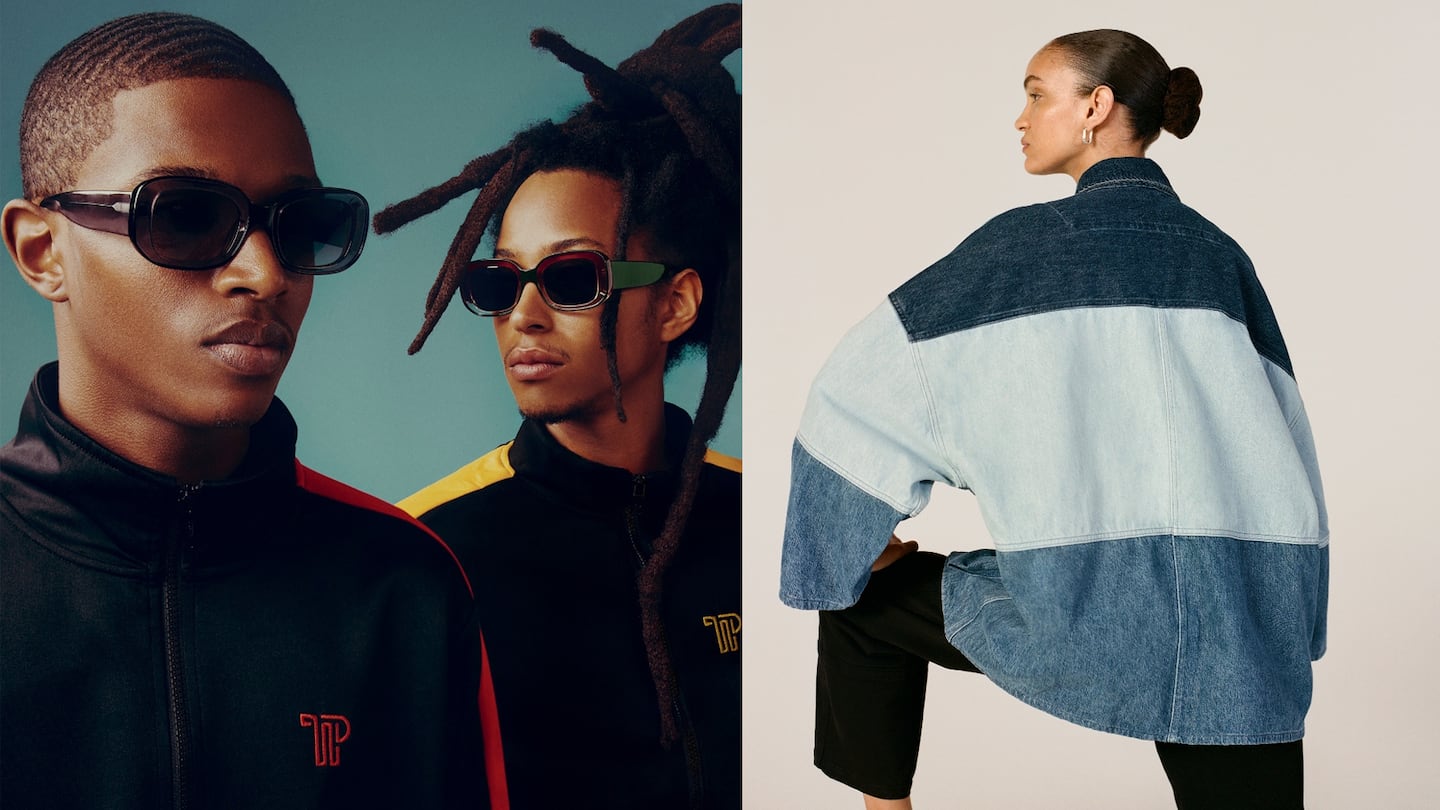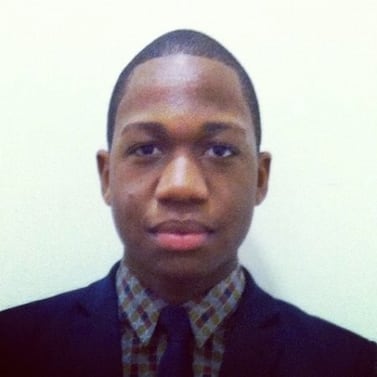
The Business of Fashion
Agenda-setting intelligence, analysis and advice for the global fashion community.

Agenda-setting intelligence, analysis and advice for the global fashion community.

Last year, Warby Parker released “Flippies,” two-in-one hinged sunglasses “dreamed up by Jimmy Fallon himself.” Along with the usual sales boost from a celebrity endorsement, the campaign, featuring the late-night host posing amiably in different-coloured jumpers to match the multi-hued frames, not-so-subtly reassured potential customers unfamiliar with the eyewear start-up that it was as mainstream as any pair they could pick up at Lenscrafters.
For its latest collaboration, Warby appears to be shoring up its indie cred.
Last month, the eyeglass maker partnered with New York-based clothing brand Theophilio, best known for designer Edvin Thompson’s Caribbean inspired ready-to-wear, to debut a pair of retro-inspired sunglasses.
“We’re a brand that was built on word of mouth, and it’s still a main driver of our customer acquisition strategy. These collaborations contribute to it,” said Neil Blumenthal, co-founder and co-chief executive of Warby Parker. “Hopefully they lead to new and existing customers thinking that’s clever, that’s smart.”
ADVERTISEMENT
Warby Parker is not the only direct-to-consumer brand that’s recently taken this approach: also in March, Everlane launched a collection of some of its best-known styles, redone in London-based womenswear designer Marques Almeida’s signature prints and manufactured from deadstock fabric. It was the basics brand’s first collaboration.
There’s a long history of big fashion brands doing tie-ups with smaller labels. These partnership allow the incumbents to score cool points while the upstarts access a large audience. What’s changed is who counts as an incumbent: it wasn’t so long ago that companies like Everlane and Warby Parker were the challengers breaking in, not the heavyweights looking to speak to new audiences.
The concept isn’t entirely new: Allbirds collaborated with Rosie Assoulin in 2022 and London-based designer Olivia Rubin in 2023, while Bonobos partnered with menswear label Thaddeus O’Neil in 2018. Warby Parker previously worked with small labels like menswear brand Noah and handbag maker Edas, along with the likes of Fallon and influencer Emma Chamberlain.
These latest tie-ups, though, come at a critical moment for mature brands in the DTC sector. Warby Parker and Everlane have avoided the worst of the category’s bust — Warby Parker’s store expansion helped it grow sales and increase margins, and in 2023, Everlane returned to profitability and generated a modest sales bump last year. But like many brands, they are facing pressure from investors to find ways to grow sales without sacrificing profits. In addition to being cool, brands like Theophilio and Marques Almeida are cheap to work with, at least relative to a digital ad campaign (or Fallon, for that matter).
“It is not a coincidence that you’re seeing partnerships ... start to rise to the surface across multiple DTC brands,” said Taryn Jones Laében, founder of advisory and investment firm IRL Ventures. “The broader environment and capital constraints … [is] forcing DTC brands to innovate and evolve their playbook in a way that is economically efficient and capital light.”
In their early days, DTC brands built name recognition through digital advertising. As they have pulled back on marketing, they’ve reduced their losses, but also their mindshare among consumers. Everlane, for one, has seen its earned media value, a measure of buzz on social media platforms like Instagram and TikTok, fall 32 percent year over year in 2023, according to influencer marketing platform CreatorIQ, as fewer users make specific posts about Everlane’s products.
“The larger you get, the more you struggle with authenticity,” said Dylan Carden, research analyst at financial services firm William Blair. “You’re left scrambling as to how you grow awareness, and how you grow awareness in a really sticky manner.”
A collaboration with an independent brand won’t lead to an influx of new customers, but it can help rebuild and strengthen some of that last connection. The promise of something out of the ordinary can also give consumers a reason to visit DTC brands’ stores – a particular boon for Warby Parker, which has over 200 locations.
ADVERTISEMENT
“Really interesting content and really interesting collaborations can be a great way to retain and re-engage with customers who might not have thought about you in a while,” Laében said. “Selling to a customer you’ve already acquired is obviously the most efficient sale you can make.”
If done well, a collaboration can also generate earned – that, is unpaid – media. Everlane’s Marques Almeida collection received a glowing writeup by The Cut, which praised several pieces and reprinted glowing comments users had left on Everlane’s Instagram. It was the first time in nearly two years the publication had written a shoppable post exclusively about the brand (in 2018, when Everlane fever was at its peak, the company was featured in roughly a dozen such posts).
“This generation of executives that are leading these brands get a sense of how the larger landscape begins to attach to them,” said Brent Vartan, managing partner at investment firm and creative agency Bullish. “A lot of what a brand is is really understanding not just exactly what you sell, but exactly what it means to people.”
Brand collaborations don’t come without headaches. The products made for these partnerships often generate lower profit margins since they are typically one-offs. Giant brands like Nike also have bigger marketing budgets to get the most out of their product partnerships. That’s one reason smaller brands tend to be tapped for collaborations, rather than instigating them.
So far, Everlane’s collaboration has made a bigger splash than Warby Parker’s, generating about nine times the media impact value, a measure of engagement on social media and other sources in the two days after launch, according to data from social media analytics firm Launchmetrics.
There are plenty of benefits for emerging designers, too.
Theophilio’s Thompson said he appreciated the ability to take the lead on designing the frames for the Warby Parker collaboration and will ask for the same level of autonomy in future collaborations. Marques Almeida has seen a boost in its own direct-to-consumer business as more consumers go to their e-commerce site to buy pieces from the collaboration.
“It’s not just a destination for our [Everlane] collections, it’s a destination for other types of products,” said Marta Marques, co-founder and co-creative director at Marques Almeida. “Hopefully that gives us a different kind of platform and authority as a brand.”
Founder Michael Preysman and his investors are back in growth mode after implementing cost cuts and changes to the product mix last year. Whether Everlane can find a new leader to make it the sales juggernaut it's always dreamt of being will be a test case for whether late-stage start-ups can escape the direct-to-consumer curse.
The cost to advertise on Meta — once digital brands’ primary marketing channel — has finally come down. But start-ups will continue to decrease their reliance on social media, including investing more in offline advertising and in targeting customers on Google, where the intent to buy is higher.
Warby Parker’s continued brick-and-mortar expansion has given two of its less recognisable digitally-native peers — Zenni Optical and Eyebuydirect — a chance to raise their profiles among online shoppers.

Malique Morris is Direct-to-Consumer Correspondent at The Business of Fashion. He is based in New York and covers digital-native brands and shifts in the online shopping industry.
In London, where independent labels have been hit hard by the implosion of key stockist Matches, brands like Clio Peppiatt, Marfa Stance and Completedworks have grown direct-to-consumer businesses that peers can learn from.
Apparel start-ups founded on the promise of offering men the perfect T-shirt are proving resilient in an otherwise dreary DTC sector rampant with fire sales, bankruptcies and steep revenue declines.
Apparel brands Knot Standard and Billy Reid are teaming up in a move investors say we may see more of as fashion start-ups seek alternative funding routes to grow their businesses.
The embattled athleisure brand has mounting cash problems, Sourcing Journal says.